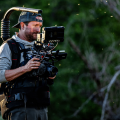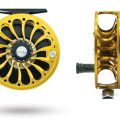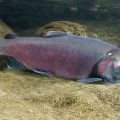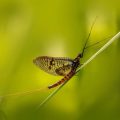Fly Fishing Jazz: Fundamentals Before Improvisation

Practice makes perfect, Gardiners Island. Photo Dakota Richardson
I had dinner with my good friend John Merwin the other night. John has written 15 of the most read, most quoted books on fishing, his career as a magazine editor is legendary, and he’s a co-editor-at-large for Field & Stream. In a nutshell, when Merwin talks, Deeter listens.
So I was happy to hear him say that he not only enjoys “Fly Fishing Jazz,” he also is a lifelong jazz music aficionado. As such, we talked about how mastering the fundamentals is the key to any artistic expression—be that in music, writing, even fly fishing.
This column has focused on the notion of free expression on the river, and going “off the sheet music” when you fish, but by no means does that advocate a lack of structure, or undermine the need to practice. And practice. And practice.
In the musical context, I think of the thousands of scales and arpeggios I played over the years. The thing about playing an improvisational solo is that if you are actually thinking about the notes you play, instead of willing them from the instrument—you’re really not playing anywhere near your potential. You play scales, arpeggios, and the like so your brain and fingers just know, without processing thoughts, where the melodies should evolve, and how the notes fit together.
It’s the same with fishing. If you have to think about things like “10-and-2,” stopping and starting your rod as you cast, how best to generate good line speed at the exact moment when a 24-inch brown trout is sucking down mayflies in a run 35 feet in front of you… well, you’re not going to do as well as you could when you’re just willing good casts that were honed through hours of practice.
The golfer doesn’t just step up on the first tee and smash a 300-yard drive down the fairway without first spending hours at the driving range, building a swing to the point of muscle memory.
A person doesn’t just sit at a computer and bang out a great novel without years and years of learning grammar, punctuation, and spelling.
A jazz musician doesn’t pick up a tenor sax and play a Coleman Hawkins solo unless he or she has poured hours of fundamental drills through that horn, thinking about where their heart wants the music to go, not what their fingers are doing.
Same with fishing. Practice casts. Every time you fish, set aside 20 minutes to work on casts, before you start, or after you finish with the fish. When you “will” your casts, instead of “aim” your casts—that’s when you can start playing jazz on the river.











